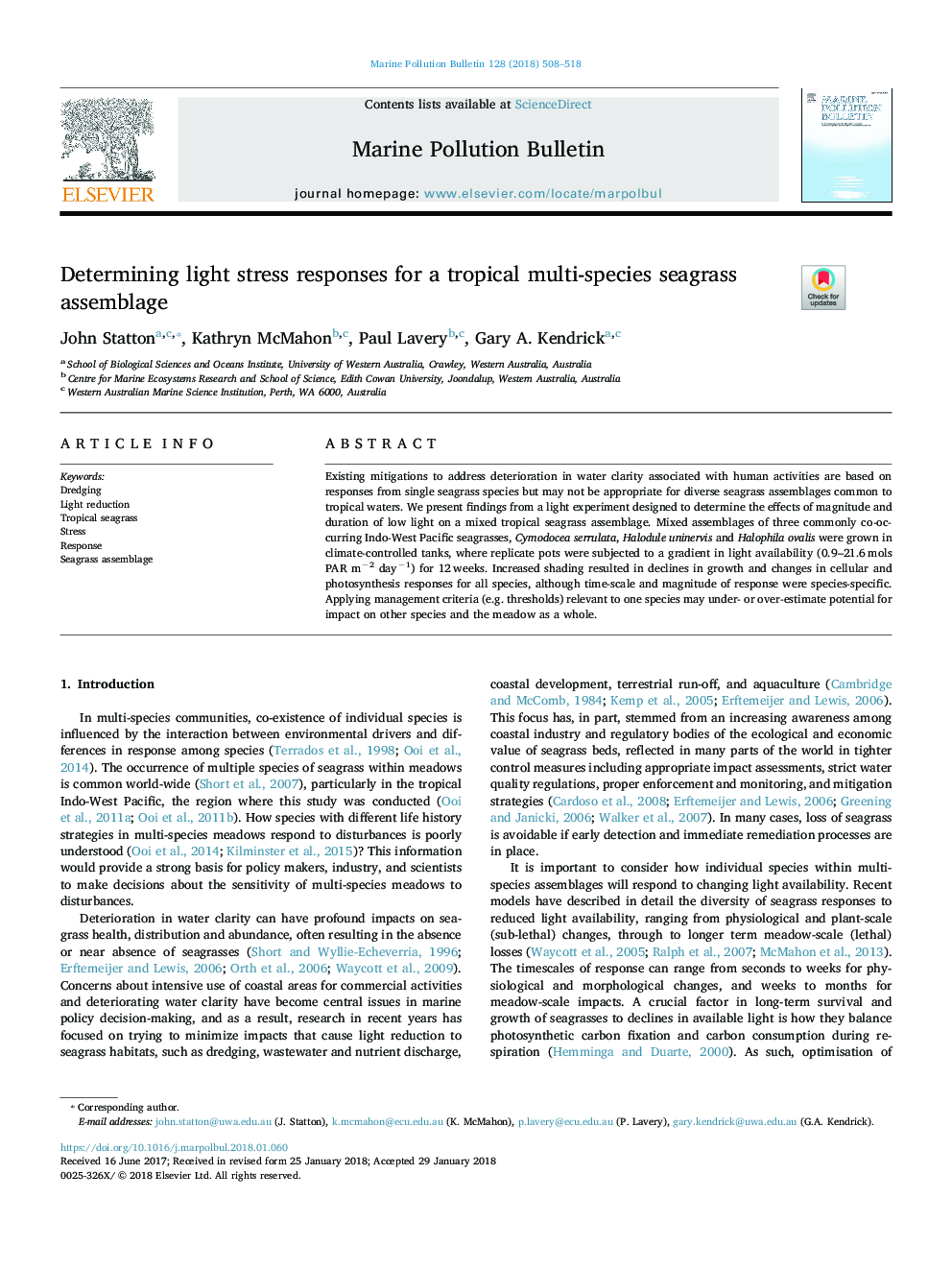| Article ID | Journal | Published Year | Pages | File Type |
|---|---|---|---|---|
| 8871826 | Marine Pollution Bulletin | 2018 | 11 Pages |
Abstract
Existing mitigations to address deterioration in water clarity associated with human activities are based on responses from single seagrass species but may not be appropriate for diverse seagrass assemblages common to tropical waters. We present findings from a light experiment designed to determine the effects of magnitude and duration of low light on a mixed tropical seagrass assemblage. Mixed assemblages of three commonly co-occurring Indo-West Pacific seagrasses, Cymodocea serrulata, Halodule uninervis and Halophila ovalis were grown in climate-controlled tanks, where replicate pots were subjected to a gradient in light availability (0.9-21.6â¯mols PAR mâ2 dayâ1) for 12â¯weeks. Increased shading resulted in declines in growth and changes in cellular and photosynthesis responses for all species, although time-scale and magnitude of response were species-specific. Applying management criteria (e.g. thresholds) relevant to one species may under- or over-estimate potential for impact on other species and the meadow as a whole.
Related Topics
Physical Sciences and Engineering
Earth and Planetary Sciences
Oceanography
Authors
John Statton, Kathryn McMahon, Paul Lavery, Gary A. Kendrick,
